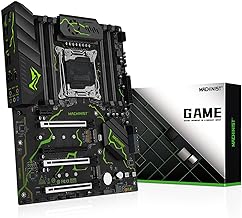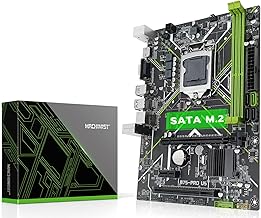5 important factors worth considering when looking for the best mini itx cases
When it comes to small computers, choosing a mini ITX case is a big decision that combines style and function. Whether you’re building a gaming setup or a powerful workstation, the size, airflow, and customization options of these compact cases redefine what’s possible. With the industry moving fast, it’s important to carefully pick a mini ITX case that looks good but also keeps your computer cool and offers different setup options. In this world where every tiny detail matters, the mix of creative design and practical features is at the heart of the mini revolution, inviting fans and pros to find a balance between style and usefulness when picking the perfect mini ITX case.
See our guide to the best mini itx cases.
Size and dimensions
When choosing a mini ITX case, it’s important to think about size and how it will affect your experience. A smaller case can save space on your desk and be easier to carry around. However, you don’t want to sacrifice internal space for components or cable management. Balancing a compact design with enough room for customization is key.
The size of a mini ITX case can also impact how well your computer stays cool. Good ventilation and fan placement can prevent overheating and help your components last longer. While smaller cases may have fewer cooling options, new designs like compact liquid cooling systems have made it easier to keep a system cool.
Choosing a mini ITX case that balances size, internal space, and cooling capacity is important for a reliable performance. It’s crucial to find a case that fits your needs and keeps your system running smoothly.
Compatibility with components
When building a mini ITX case, it’s important to make sure all the parts work well together. These cases are small, so you need to carefully plan out where everything will go. Things like the motherboard size, cooling system, and GPU length all need to fit properly. Some people might see the limited space as a challenge, but it can lead to creative solutions and unique builds that stand out.
Balancing performance and size can help you come up with new ideas and push the limits of what you can do in a mini ITX case. Spending time researching and understanding the specs of your case and components can save you from problems later on. Making sure everything is compatible is key to avoiding frustration and having to redo your build.
Sometimes you may have to make compromises because of space, but having a sleek, customized system is worth it in the end. Think of the constraints as chances to be creative and try new things. Mini ITX cases can be a great way to build setups that go beyond what people expect.
Airflow and cooling options
When choosing a mini ITX case, it’s important to consider airflow and cooling to keep your components running smoothly. Look for models with good airflow design, like fan placement and ventilation slots, to avoid overheating. Getting a case with room for extra cooling options, like liquid cooling or high-performance air coolers, can help manage heat and make your hardware last longer.
Picking a mini ITX case with good airflow not only protects your components from overheating but also makes for a quieter and more enjoyable user experience. When cooling and airflow work well together in a small case, your system can handle tough tasks and long gaming sessions without a hitch. Choosing a mini ITX case that balances size and cooling features will not only look nice but also keep your hardware running at its best for years to come.
Build quality and durability
When considering mini ITX cases, it’s important to prioritize high-quality construction and durability for a worthwhile investment. These smaller cases not only house your components but also show how manufacturers are committed to protecting your hardware for the long run. They not only keep your components safe, but also cater to the needs of gamers and PC enthusiasts who value both style and functionality.
When buying a mini ITX case, it’s essential to look beyond just the appearance. These cases should be able to last over time, handling wear and tear while meeting the changing demands of technology. As smart shoppers, we should focus on traits like resilience and durability instead of getting caught up in fleeting trends or surface-level designs.
Aesthetics and design features
Choosing a mini ITX case involves considering how it looks and what features it offers. The style, shape, and materials used all affect how the case looks and works. A well-designed mini ITX case improves the look of your setup and makes it easier to manage cables and access components. It’s important to choose a case that not only looks good but also has practical design elements for a functional and attractive build.
The design of a mini ITX case can show off your personal style. Whether you like a simple look with clean lines or a bold design with colorful lights and glass panels, there are many options to choose from. Getting a case that matches your style can make your computing experience better and create a cohesive setup. Design features are not just for looks, they also affect how satisfied you are with your mini ITX case choice.
Conclusion
As technology continues to advance, mini ITX cases have become known for being compact and efficient while still offering powerful functionality. These cases have changed the way we think about building PCs with their sleek designs and ability to save space. By combining performance and aesthetics, mini ITX cases open up a world of possibilities in the computing industry, creating a new era where power is not limited by size. Want more info on chess set ever 3x, check the best chess set ever 3x.

